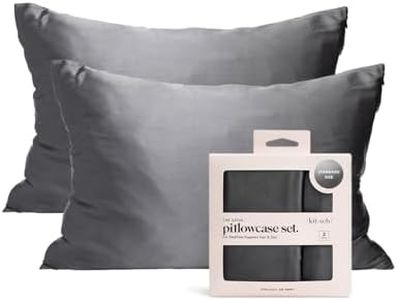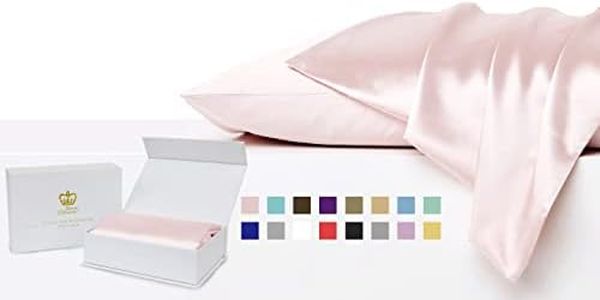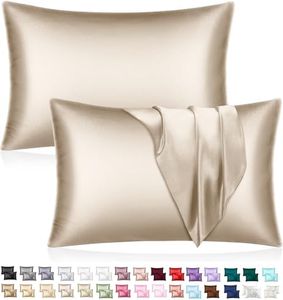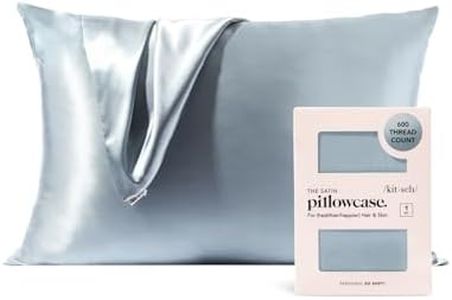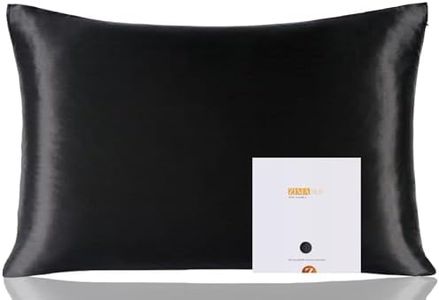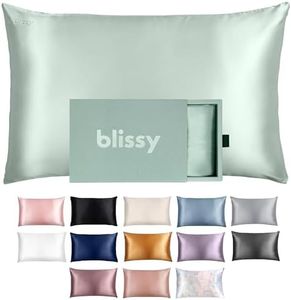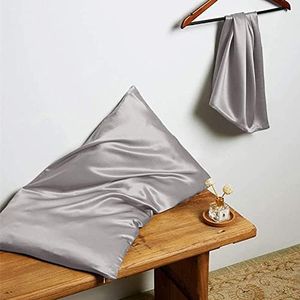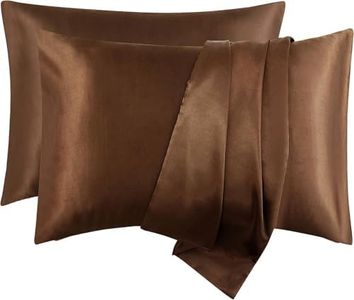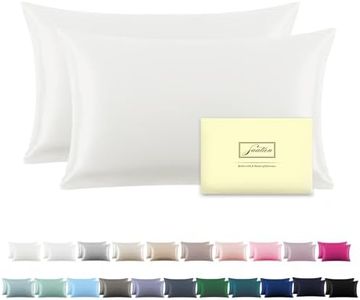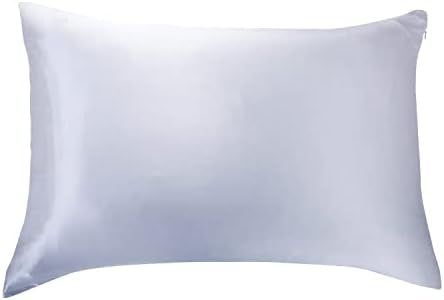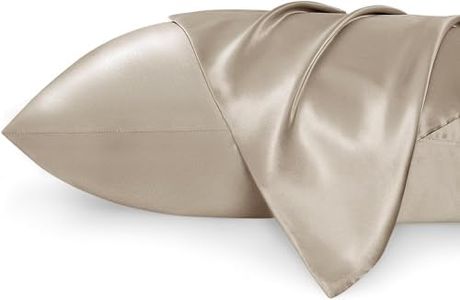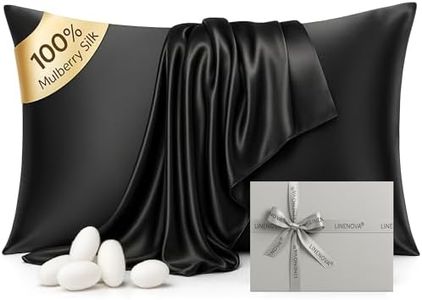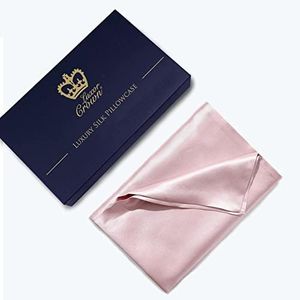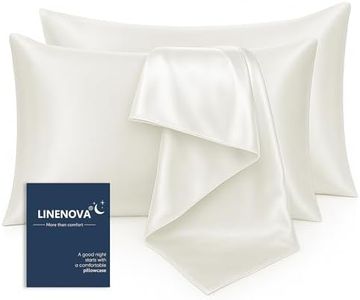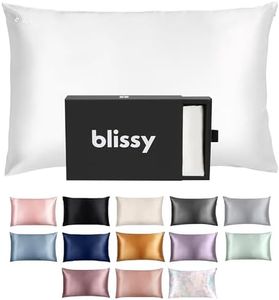We Use CookiesWe use cookies to enhance the security, performance,
functionality and for analytical and promotional activities. By continuing to browse this site you
are agreeing to our privacy policy
10 Best Satin Vs Silk Pillowcases
From leading brands and best sellers available on the web.Buying Guide for the Best Satin Vs Silk Pillowcases
Choosing between satin and silk pillowcases can have a noticeable impact on your nightly comfort and even your beauty routine. Both materials are known for their smooth texture, which helps reduce hair breakage and facial creasing compared to traditional cotton pillowcases. However, they differ in terms of feel, care, durability, and cost. Understanding the key differences between satin and silk will help you select the one that best fits your preferences, lifestyle, and care routines.Material CompositionMaterial composition refers to what the pillowcase is actually made from. Silk pillowcases are woven from natural silk fibers produced by silkworms, making them a natural and biodegradable option. Satin, on the other hand, is a type of weave rather than a material and is usually made from synthetic fibers such as polyester, though it can sometimes be blended with silk or nylon. If you have allergies to synthetic fibers or prefer eco-friendly options, silk may appeal more. If you’re looking for something that performs similarly to silk but is vegan or less likely to trigger allergies, satin is worth considering.
Texture and FeelThe smoothness and feel of a pillowcase can affect how it interacts with your skin and hair. Both satin and silk pillowcases provide a glossy texture that feels gentle, but silk tends to feel slightly softer and more luxurious due to its natural origin. Satin can sometimes have a slicker, slightly cooler feel, especially if it’s made from polyester. If you prioritize a natural, soft feeling for sensitive skin or fragile hair, silk usually wins, while satin offers a similar but sometimes more slippery sensation at a lower production cost.
Moisture Absorption and BreathabilityMoisture absorption and breathability impact how the pillowcase feels during sleep and how it interacts with skincare or hair treatments. Silk is more breathable and naturally wicks away moisture, helping regulate heat and keeping your skin and hair from drying out. Satin made from synthetic fibers is less breathable and may trap heat or sweat, but it also does not absorb as much moisture, which can be beneficial for people trying to preserve hair oils or certain skin treatments. If you tend to get hot at night, silk may help you stay cooler, while satin’s low absorption is ideal if you wish to retain more skin or hair moisture.
Durability and CareDurability and ease of care are important for long-term use. Silk is a delicate natural fiber that may require gentle hand washing or use of a delicate machine cycle and specific detergents to maintain its look and feel. Satin, especially if made from polyester, can generally be machine washed and is less prone to wrinkling or shrinkage. If you prefer low-maintenance bedding, satin may be easier to care for, whereas silk may be best for those willing to put in extra effort for a more luxurious experience.
Sensitivity and Hypoallergenic QualitiesBoth satin and silk have qualities that may benefit sensitive skin or those prone to allergies. Silk is naturally hypoallergenic thanks to proteins that repel dust mites and allergens. Satin, while not inherently hypoallergenic, is smooth and can help reduce friction, lowering irritation for sensitive skin. If you are highly sensitive or have allergies, silk may provide extra peace of mind, while satin still offers a smoother surface than cotton or other woven fabrics.
